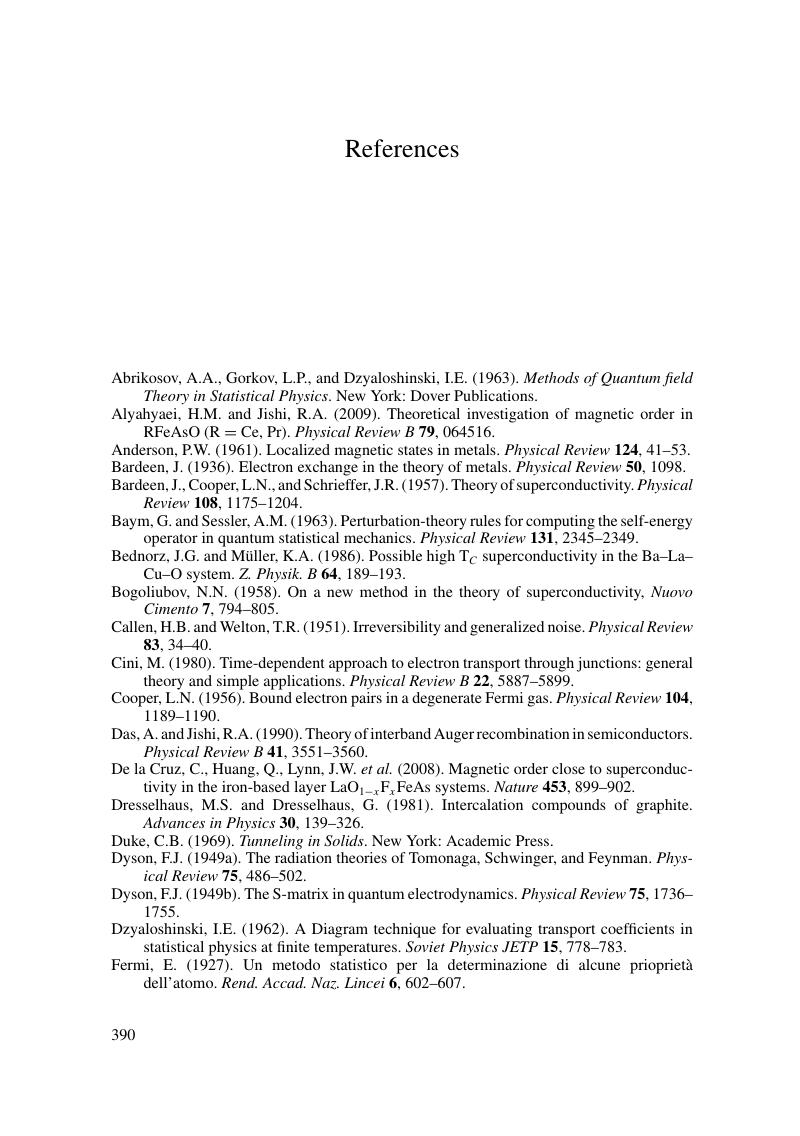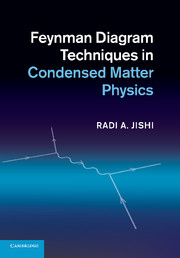Book contents
- Frontmatter
- Contents
- Preface
- 1 A brief review of quantum mechanics
- 2 Single-particle states
- 3 Second quantization
- 4 The electron gas
- 5 A brief review of statistical mechanics
- 6 Real-time Green's and correlation functions
- 7 Applications of real-time Green's functions
- 8 Imaginary-time Green's and correlation functions
- 9 Diagrammatic techniques
- 10 Electron gas: a diagrammatic approach
- 11 Phonons, photons, and electrons
- 12 Superconductivity
- 13 Nonequilibrium Green's function
- Appendix A Second quantized form of operators
- Appendix B Completing the proof of Dzyaloshinski's rules
- Appendix C Lattice vibrations in three dimensions
- Appendix D Electron-phonon interaction in polar crystals
- References
- Index
- References
References
Published online by Cambridge University Press: 05 April 2013
- Frontmatter
- Contents
- Preface
- 1 A brief review of quantum mechanics
- 2 Single-particle states
- 3 Second quantization
- 4 The electron gas
- 5 A brief review of statistical mechanics
- 6 Real-time Green's and correlation functions
- 7 Applications of real-time Green's functions
- 8 Imaginary-time Green's and correlation functions
- 9 Diagrammatic techniques
- 10 Electron gas: a diagrammatic approach
- 11 Phonons, photons, and electrons
- 12 Superconductivity
- 13 Nonequilibrium Green's function
- Appendix A Second quantized form of operators
- Appendix B Completing the proof of Dzyaloshinski's rules
- Appendix C Lattice vibrations in three dimensions
- Appendix D Electron-phonon interaction in polar crystals
- References
- Index
- References
Summary

- Type
- Chapter
- Information
- Feynman Diagram Techniques in Condensed Matter Physics , pp. 390 - 393Publisher: Cambridge University PressPrint publication year: 2013



